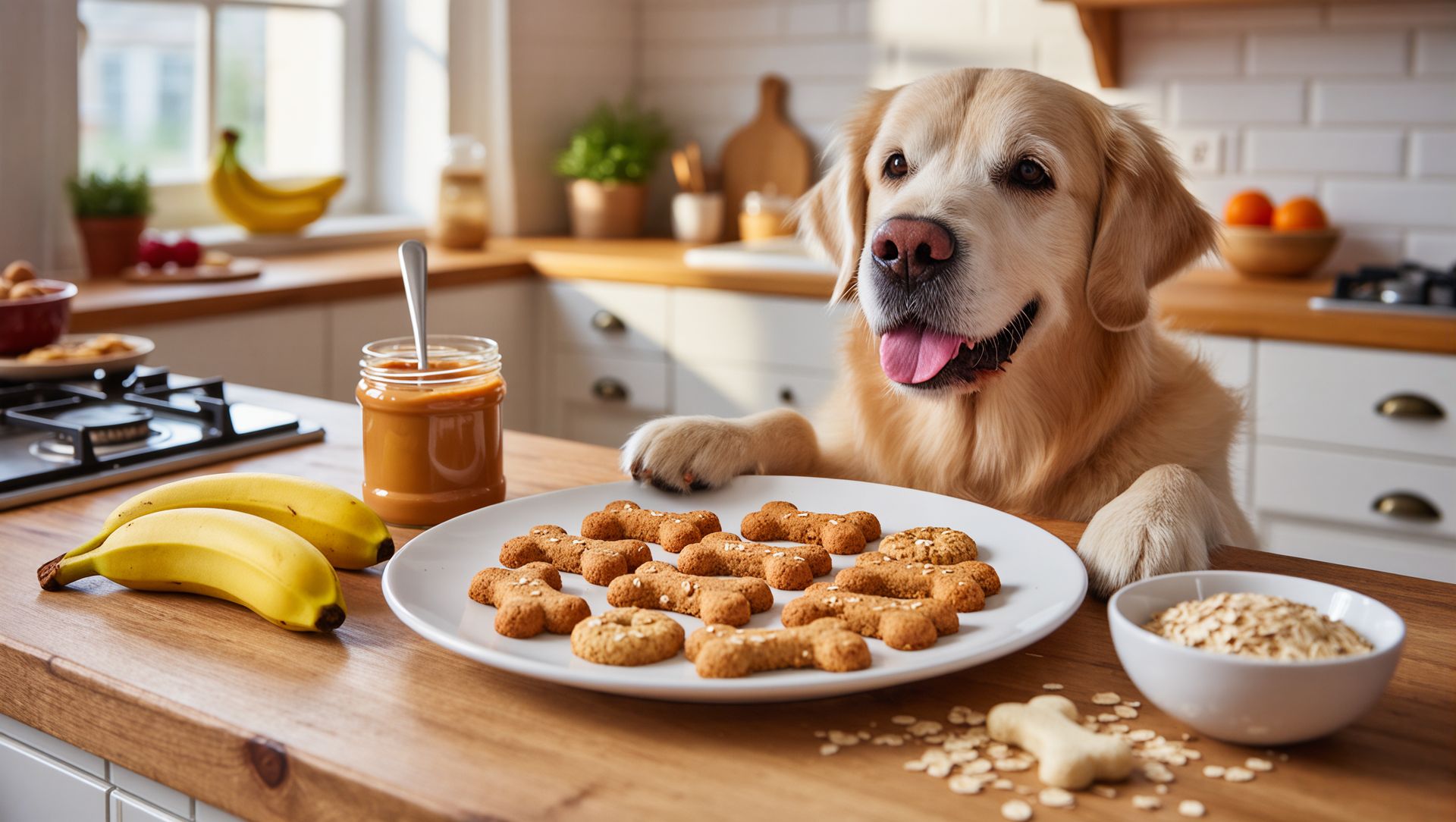
Hey {{first_name}} Dog Parents 💌,
You love your dog. You want them happy, healthy, and thriving. So when you see labels like “grain-free”, “high protein”, or “gluten-free”, it feels like you’re doing something right.
But what if doing the right thing could unintentionally hurt them?
Recent research has highlighted a possible link between certain grain-free diets and heart disease in dogs. Specifically, diets high in legumes (like peas, lentils, chickpeas) and potatoes may be connected to Dilated Cardiomyopathy (DCM), a condition where the heart struggles to pump blood efficiently.
It’s scary. But knowledge is power. Let’s break it down so you can feed confidently.

🧠 Grain-Free Doesn’t Always Mean Healthy
Grain-free diets were originally designed for dogs with true allergies or intolerances. They provided an alternative for pups who couldn’t tolerate wheat, corn, or soy.
Over time, marketing made grain-free diets seem healthier for all dogs, even those with no sensitivity. But “grain-free” does not automatically equal “better,” and it can carry hidden risks if the food isn’t properly balanced.
Here’s what every dog parent needs to know:
Legumes and potatoes are commonly used in grain-free foods to replace traditional grains. While they are not inherently bad, some dogs may not get enough taurine, an essential amino acid for heart function, from these diets.
Not all grain-free foods are risky. If the formula is taurine-supplemented or nutritionally complete, it can be safe for most dogs.
Age, breed, and genetics matter. Large or deep-chested breeds, like Golden Retrievers, Labrador Retrievers, and Dobermans, may be more sensitive to taurine deficiency and require extra monitoring.
📌 Grain-free is a tool, not a trend. Focus on quality ingredients, proper balance, and veterinary guidance rather than marketing hype.
🥜FEATURED RECIPE SPOTLIGHT:
PEANUT BUTTER BANANA COOKIES

A chewy, easy-to-make treat that smells so good… you’ll wish it was for you too.
🧾 Ingredients:
1 ripe banana (mashed)
½ cup natural peanut butter (xylitol-free)
1 cup oat flour (or ground rolled oats)
1 egg (optional for extra binding)
🥄 Instructions:
Preheat oven to 350°F (175°C).
Mix all ingredients in a bowl until a soft dough forms.
Roll into small balls and flatten slightly, or use cookie cutters.
Bake for 12–15 minutes until golden around the edges.
Cool completely before serving. Store in an airtight container.
🐶 Why It’s Paw-some:
✔️ Just 3–4 pantry ingredients
✔️ Great for training or special snacks
✔️ Soft enough for dogs of all ages
✔️ Naturally sweet and safe
Want the full recipe and more just like it?
✅ Signs Your Dog’s Heart May Need a Check
Even without changing their diet, watch for subtle warning signs that can indicate heart stress:
Unusual fatigue during walks, playtime, or simple activities
Coughing or labored breathing, especially at rest
Rapid heartbeat, fainting, or weakness
Sudden weight loss or decreased appetite
📌 Early detection is crucial. If you notice any of these signs, consult your veterinarian immediately. Blood tests and physical exams can detect heart issues before they become serious.
🥣 How to Feed Safely
Feeding your dog responsibly is about more than avoiding risks. It’s about supporting their heart, metabolism, and overall wellbeing.
Here’s how to make smart choices:
Look for AAFCO-approved, complete diets: check the label for “Complete and Balanced” for your dog’s specific life stage.
Check for taurine: sometimes listed in the ingredient panel or guaranteed analysis. If it’s not listed, ask your vet for guidance.
Rotate proteins and grains: providing a variety of high-quality sources supports heart health and proper nutrient absorption.
Consult your veterinarian before switching diets: especially for large, aging, or sensitive dogs. Your vet can recommend blood tests or supplemental taurine if needed.
📌 Remember: Feeding isn’t just about ingredients. It’s about meeting your dog’s specific needs, their breed, age, lifestyle, and health status.
🧠 TRIVIA CORNER
Question: What amino acid is crucial for maintaining a healthy dog heart, and may be missing in some grain-free diets?
🐶 Grain-Free Myths Busted
Myth 1: Grain-free is always healthier.
Truth: Only dogs with true allergies or intolerances benefit. For most dogs, grain-free is not inherently better and may even pose risks if not properly formulated.
Myth 2: All legumes are bad.
Truth: Legumes are safe in moderation and when combined with a complete, balanced formula. They provide fiber, protein, and nutrients that can be beneficial.
Myth 3: Switching immediately prevents heart issues.
Truth: Gradual, veterinarian-guided transitions are safer. Abrupt changes can upset digestion, mask early symptoms, or stress your dog unnecessarily.
📌 Takeaway: Grain-free diets are not one-size-fits-all. Understanding your dog’s needs and consulting a veterinarian is the best way to protect heart health while feeding safely.
🐾 Community Tip
Many dog parents have found success by:
Feeding taurine-rich diets or supplements under vet supervision
Avoiding grain-free unless medically necessary
Monitoring energy, weight, and vet checkups closely
📸 Share your dog’s mealtime with #HeartSmartDog and tag @usadogowners, we’ll feature safe feeding wins and real-life heart heroes in our next newsletter!
📧 🐾 Loved this article? Share it with a fellow dog lover!
"Good nutrition isn’t about trends. It’s about knowing your dog, their body, and what keeps their heart beating strong."
Grain-free isn’t evil. It’s a choice that requires knowledge. Your dog relies on you to provide nutrition that fuels their energy, protects their heart, and keeps their tail wagging.
Make decisions intentionally. Watch your dog closely. And remember, feeding safely is just another way to show love.
Wags & gratitude,
Mark
USA Dog Owners Association
Because every dog deserves to feel their best. And so do you. 🐾
📬 Subscribe to our full dog-loving universe: dogowner.beehiiv.com
👥 Join the community on Facebook: USA Dog Owners Facebook Page
📸 Tag us on Instagram: @usadogowners
🎥 Watch the breed in action: YouTube Channel
